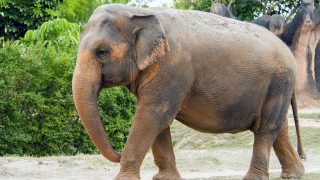
Islamabad High Court Holds that Animals Have Legal Rights
By Nicole Pallotta, PhD, Senior Policy Program Manager
Contents
- 1 Summary/intro
- 2 An Opportunity to Rethink our Relationship with Animals
- 3 “Do Animals Have Rights?”
- 4 Animals and the Quran
- 5 Unnecessary Suffering
- 6 Constitutional Protection
- 7 The Source of Natural Rights: Sentient Life
- 8 Which Animals?
- 9 Resolution of the Case
- 10 Moral Consideration, Law, and Social Norms
- 11 Conclusion
- 12 Further Reading
Summary/intro
Summary: The Islamabad High Court has held that animals have natural rights and are entitled to protection under the Pakistani constitution. The case before the court was threefold, involving an elephant held in solitary confinement at a zoo, a rescued bear who had been forced to “dance” and perform tricks, and the killing of stray dogs. Despite at times anthropocentric framing, the ruling unequivocally recognizes that animals have legal rights and is highly critical of humanity’s treatment of wild animals in particular.
Do the animals have legal rights? The answer to this question, without any hesitation, is in the affirmative…. Like humans, animals also have natural rights which ought to be recognized. It is a right of each animal…to live in an environment that meets the latter’s behavioral, social and physiological needs.”
– Justice Athar Minallah, Chief Justice of the Islamabad High Court (p. 59)
In a groundbreaking decision, the Islamabad High Court in Pakistan1 has recognized that animals have legal rights and are entitled to protection under the nation’s constitution. In a 67-page ruling — dealing mainly with the treatment of an elephant at a zoo — Chief Justice Athar Minallah asked whether animals have legal rights and found, “the answer to this question, without any hesitation, is in the affirmative.”
The ruling contains striking language about the rights of animals. In addition to their physiological needs, Justice Minallah repeatedly references animals’ social and behavioral needs and their right to an environment in which these needs can be met. He is highly critical of zoos that keep wild animals (whom he refers to as “inmates”) in captive conditions that are nothing like their natural habitats, and thus prevent them from engaging in normal behaviors.2
Although the decision — which draws on religious doctrine and quotes extensively from the Quran3 — repeatedly refers to humans as “superior beings,”4 and at times frames animals’ rights in the context of human survival,5 it unequivocally recognizes that animals have natural and legal rights.
In addition, despite its at times anthropocentric framing, the ruling is highly critical of humanity’s treatment of wild animals — e.g., destroying their natural habitat and consigning them to zoos — and refers to humans as an “invasive species.”6
The case before the court combined three separate petitions. The first involved an elephant named Kaavan,7 who was being kept in deplorable conditions at the Marghazar Zoo, and whom petitioners sought to relocate to a sanctuary. The second petition involved a rescued black bear who had been abused and forced to perform tricks.8
The third petition, discussed in least detail, regarded “the killing of stray dogs allegedly in a cruel manner.”
An Opportunity to Rethink our Relationship with Animals
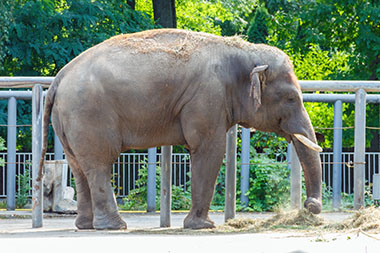 The ruling begins with a brief discussion of the current COVID-19 pandemic and frames the question of whether animals have legal rights in this context, noting the crisis that has caused “the human race to go into captivity” has given us an opportunity to rethink our relationship with nonhuman animals:
The ruling begins with a brief discussion of the current COVID-19 pandemic and frames the question of whether animals have legal rights in this context, noting the crisis that has caused “the human race to go into captivity” has given us an opportunity to rethink our relationship with nonhuman animals:
The pandemic seems to have changed the world for the time being. . . . Is it an opportunity for humans to introspect and relate to the pain and distress suffered by other living beings, animal species, when they are subjugated and kept in captivity and denied the conditions and habitats created for their survival by the Creator, merely for momentary entertainment? [The current pandemic crisis] has highlighted the interdependence of living beings on each other, the desperate need to restore the balance created in nature. . . (p.3)
After summarizing the three petitions before the court, Justice Minallah poses a question: Does the constitution — a human-made document designed to govern humans — also guarantee enforceable rights for animals?
The Constitution of the Islamic Republic Pakistan 1973. . . like most of the other constitutions, has been framed by humans for regulating themselves. . . . The fundamental rights guaranteed therein or the various types of writs that can be issued by a constitutional court are in the context of only one living species, i.e. humans. It either contemplates a ‘person’ or a ‘citizen’. Do other living beings, such as the species categorized as ‘animals’ and who share the gift of life with humans, have legal entitlements and thus enforceable ‘rights’? Does the Constitution impose any duty or duties on the State and humans regarding the welfare of other species such as animals, their conservation and protection? (p. 5)
Next, Justice Minallah considers the conditions at the zoo where Kaavan is kept, criticizing a report outlining efforts to improve conditions, calling these measures “cosmetic.” This is a common criticism of zoos in the U.S. as well. Often when zoos make “improvements,” they take the form of naturalistic flourishes — or changes that are more aesthetic than substantive — that construct a comforting narrative for human visitors rather than meaningful changes in the captive animals’ enclosures. Like a well-designed film set, these enhancements convey the illusion of nature.9
“Do Animals Have Rights?”
After expressing strong skepticism that the zoo can ever meet the needs of Kaavan and other animals, Justice Minallah returns to what he considers the fundamental issue before the court: Do animals have legal rights? In so doing, he elucidates three related questions:
1) Do animals have independent rights which humans have a duty to protect,
2) Does treating animals cruelly violate human rights, and
3) Are specific laws being broken in the cases before the court?
When considering the potential source of these rights, Justice Minallah switches between justifications. The frame employed most often throughout the ruling is that animals have independent or natural rights, which humans in turn have a duty to protect. These rights are grounded in Pakistan’s animal cruelty laws and Islamic religious doctrine. A second frame yokes the rights of animals to the rights of humans by arguing that protecting animals will also protect the environment, which is an essential component of humans’ “right to life.”
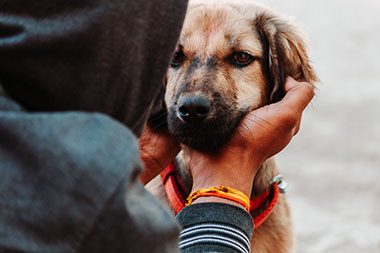
In considering whether animals have rights, before shifting to an examination of the treatment of animals by various religions, Justice Minallah provides a survey of recent jurisprudence regarding the rights of animals around the world, including cases in Argentina and Brazil in which judges granted legal personhood to an orangutan and a chimpanzee, respectively. He also cites litigation in the U.S. by the Nonhuman Rights’ Project to secure writs of habeas corpus for the release and relocation to sanctuaries of three chimpanzees and an elephant.
Animals and the Quran
Despite some of the strong language on display throughout the ruling supporting animal rights, Justice Minallaha quotes several verses from the Quran that explicitly relate to animals and which call into question the nature of these “rights.” Among these examples are passages that reference using animals for food, transportation, adornment, and to “carry your loads.” One passage says that animals were made to be subject to humans. Still other passages note the Earth was created for all beings and encourages compassion, respect, and gratitude for animals.
These religious passages, perhaps unsurprisingly, advance an animal “welfare” rather than “rights” perspective. However, just as property and personhood are not binary categories, so do concepts like welfare and rights10 exist on a continuum of legal protections from strong to weak.11
Justice Minallah lists several more verses from the Quran, concluding that not only Islam but all religions recognize the duty of humans to protect animals:
It is inconceivable that, in a society where the majority follow the religion of Islam, that an animal could be harmed or treated in a cruel manner. All religions acknowledge the rights of the animal species and the duty of humans to protect them from being harmed or treated in any manner that would subject them to unnecessary pain and suffering. (pp. 52-3)
The fact that humans have a duty of care toward animals is generally an uncontroversial position — the more difficult question is what that duty entails.
Unnecessary Suffering
Justice Minallah notes a common thread among the religious passages quoted in the ruling is that they highlight “the duties of humans to protect [animals] from harm, unnecessary suffering and pain.” Here, we see a common phrasing that has vexed U.S. advocates for animals in the legal system: the qualifier “unnecessary” precedes terms like “suffering” and “pain” in most cruelty laws. “Unnecessary” is notoriously difficult to define (and most U.S. laws do not attempt to) and creates such a large loophole that almost anything can be justified regarding society’s treatment of animals. Justice Minallah addresses this question directly, specifically in regard to wild animals kept in zoos (discussed below).
Most people would agree with Justice Minallah that no animal should be killed or harmed unnecessarily. However, the reality is that animals exploited for human use, especially those raised and killed for food, are frequently both harmed and treated in a cruel manner. The word “unnecessary” has been used to justify a wide range of maltreatment under the guise that traditional, socially normative, economically advantageous, or personally convenient equates to necessity.
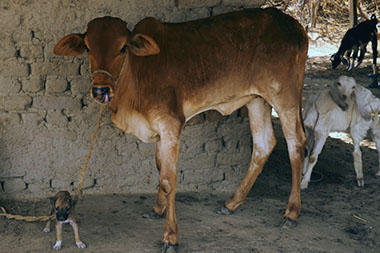 Legal vocabularies of necessity, along with language justifying “standard” or “customary” practices — as found in common exemptions pertaining to farmed animals in cruelty laws — employ circular reasoning to justify and further entrench practices that at one time may have been considered normative. Norms pertaining to the treatment of animals change over time and are not universal. For example, some practices may be considered normative primarily within an industry rather than among the general public. However, due to an aggressive lack of transparency achieved through mechanisms like deceptive marketing, corporate and government secrecy, and Ag-Gag laws, consumers may be largely unaware of routine ways animals are mistreated in the animal agriculture industry.
Legal vocabularies of necessity, along with language justifying “standard” or “customary” practices — as found in common exemptions pertaining to farmed animals in cruelty laws — employ circular reasoning to justify and further entrench practices that at one time may have been considered normative. Norms pertaining to the treatment of animals change over time and are not universal. For example, some practices may be considered normative primarily within an industry rather than among the general public. However, due to an aggressive lack of transparency achieved through mechanisms like deceptive marketing, corporate and government secrecy, and Ag-Gag laws, consumers may be largely unaware of routine ways animals are mistreated in the animal agriculture industry.
In addition, while they are treated cruelly in many contexts, including zoos and the entertainment industry, wild animals, especially charismatic megafauna like elephants and whales, tend to garner more social concern than farmed animals. Likewise, though in many places it references animals generally, the focus of this opinion is wild animals in zoos.
Justice Minallah finds that animals in zoos are protected under Pakistan’s national animal cruelty law12 and, in so doing, directly addresses the “unnecessary” qualifier. He notes that the phrase “unnecessary pain and suffering” is broad in scope and that “beneficial statutes” like the cruelty law — which was enacted for the benefit of animals — must be given the widest interpretation possible.
In addition, in determining what is “unnecessary,” Justice Minallah weighs the suffering of animals against the benefit to society provided by the zoo and finds the ethical calculus indefensible. On one side of the equation are animals who are clearly suffering, and on the other is a zoo that makes no “positive contribution whatsoever” to society. Moreover, the conditions of captivity are such that the zoo not only fails to provide an educational experience, but is likely having an adverse effect on visitors. The existence of “better and more informative opportunities” to learn about animals due to advanced technology further makes the case that the suffering of animals in the zoo cannot be justified as “necessary” (p. 52).
Constitutional Protection
Justice Minallah also found that animals are protected under the Pakistani constitution because humans have rights under this document that are directly tied to the well-being of wild animals. In employing the novel argument that cruel treatment of animals in captivity infringes on human rights, Judge Minallah concludes that animals — at least wild animals — are protected under the constitution:
The welfare, wellbeing and survival of the animal species is the foundational principle for the survival of the human race on this planet. Without the wildlife species there will be no human life on this planet. It is, therefore, obvious that neglect of the welfare and wellbeing of the animal species, or any treatment of an animal that subjects it to unnecessary pain or suffering, has implications for the right of life of humans guaranteed under Article 9 of the Constitution. . . . Cruel treatment and neglect of the wellbeing of an animal in captivity, or exposing it to conditions which do not meet the animals’ behavioural, social and physiological needs, is an infringement of the right to life of humans. (p. 56)
This is remarkably sweeping language that would have substantial implications for human-animal relations were it to be interpreted literally.
Justice Minallah also employs the less novel argument that animal cruelty is correlated with diminished empathy for humans. The antisocial effects of maltreatment of animals form the second basis for the conclusion that preventing harm to animals is a constitutional obligation.13
Finally, he critiques the fact that most national constitutions are framed in terms of humans, rather than in the context of “life” more broadly, asserting this anthropocentric focus gives rise to confusion and conflict when courts consider the plight of other-than-human living beings.
As an example of this problem, Justice Minallah points to the Nonhuman Rights Project’s ongoing litigation, in which U.S. courts have “gone to the extent of implicitly recognizing animals to be other than a mere ‘thing’ but the relief of habeas corpus was denied on the ground that they could not be treated as humans.” For this reason, Justice Minallah argues that although constitutions were written with humans in mind, they must be adapted to encompass other sentient beings.
The Source of Natural Rights: Sentient Life
Justice Minallah refers to the “natural rights”14 of animals, which he locates in the fact that they are “alive” and have been given the “gift of life” (p.59). While this is a broad category, he circumvents a slippery slope argument that might sweep up plants and bacteria by repeatedly mentioning sentience, as well as referring to living “beings.” Therefore, it seems the origin of the natural rights referenced in the ruling is the state of being alive and sentient:
The human rights are inherent because they stem from the attribute of being ‘alive’. Life, therefore, is the premise of the existence of a right. . . . An object or thing without ‘life’ has no right. A living being on the other hand has rights because of the gift of ‘life’. An animal undoubtedly is a sentient being. It has emotions and can feel pain or joy. (p. 59)
Justice Minallah also addresses — and handily dismisses — a common straw man fallacy employed by opponents of expanded legal rights for animals: namely that this means they will have the same rights as human beings:
It has never been the case of those arguing on behalf of animals to recognize that they have the same rights enjoyed by the human species. No relief has ever been sought on behalf of any animal to grant it freedom by releasing it from a zoo and thus allowing its free access to public places meant for humans. (pp. 58-59)
Rather, his use of the phrase “natural rights” refers to animality, or animals’ species-specific nature and needs:
By nature each specie has its own natural habitat. . . . It is unnatural for a lion to be kept in captivity in a restricted area. To separate an elephant from the herd and keep it in isolation is not what has been contemplated by nature. Like humans, animals also have natural rights which ought to be recognized. It is a right of each animal, a living being, to live in an environment that meets the latter’s behavioral, social and physiological needs. (pp. 59-60)
Which Animals?
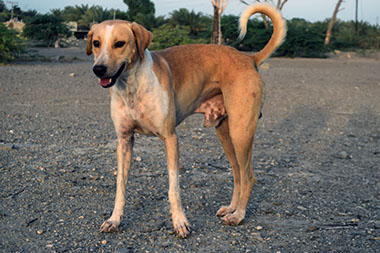 This all raises the two-pronged question: 1) What natural rights do animals have, and 2) do they apply to all animals? Justice Minallah does not overtly state that only some animals have natural rights, but the examples and language used, as well as the case before the court, suggest he believes wild animals are the primary beneficiary of these rights. This could be because two of the petitions concern wild animals held in captivity. However, on the third petition, regarding the killing stray dogs, Justice Minallah is virtually silent.15
This all raises the two-pronged question: 1) What natural rights do animals have, and 2) do they apply to all animals? Justice Minallah does not overtly state that only some animals have natural rights, but the examples and language used, as well as the case before the court, suggest he believes wild animals are the primary beneficiary of these rights. This could be because two of the petitions concern wild animals held in captivity. However, on the third petition, regarding the killing stray dogs, Justice Minallah is virtually silent.15
Without further details, it is impossible to say why this is. However, it could be noted that in the U.S., we are accustomed to companion animals like dogs and cats being the primary subjects of jurisprudential discussions about legal rights for animals (though cognitively complex wild animals like primates, elephants, and orcas also figure prominently) — when these rights are discussed at all.16
Yet, Pakistan has a different culture regarding companion animals, particularly dogs, who less commonly live indoors and are often perceived as workers more than household companions or family members.17 18 Stray dogs, who sometimes become aggressive towards people, are a source of social conflict as well and are frequently victims of cruel treatment.19
The less prominent cultural belief that dogs are family, however, does not quite explain why the opinion primarily mentions wild animals — as the latter are not considered family either. The privileging of wild animals in this decision appears rather to be the belief that human rights are inexorably tied to the rights of wild animals via the bridge of habitat preservation, which is essential to the survival of humans and animals alike. If wild animals’ rights are disregarded, the argument seems to go, so too will their habitat be devalued, which in turn harms humans. The ruling does not refer to farmed animals except in quoted passages from the Quran that mention using them for food, transportation, and other utilitarian ends.
Resolution of the Case
The 67-page decision forms a lengthy backdrop and justification for the Islamabad High Court’s ruling that Kaavan the elephant must immediately be transferred from the zoo to an appropriate sanctuary. Justice Minallah found the black bear — who was the subject of the second petition — had been treated in a cruel manner and was therefore rightly seized, granting the petitioner permission to move him to a bear sanctuary. Regarding the third petition, any policy changes regarding the killing of stray dogs remain unclear and were delegated to a wildlife management board with the directive that the policy must be “humane.” Justice Minallah writes:
The Board is the competent authority to prescribe a policy and mechanism regarding stray dogs. It is expected that the Board while formulating the policy will have regard to the best practices observed internationally and the injunctions of Islam which teaches treating animals in humane manner. (pp. 64-5)
Moral Consideration, Law, and Social Norms
Justice Minallah places great weight on cognitive ability in his reasoning throughout the ruling. Likewise, his assertion that humans are superior to other animals is grounded in cognitive capacity. Arguments that locate moral consideration or legal rights in mental ability are often criticized as speciesist. However, in creating a de facto hierarchy based on cognitive capacity rather than the frequently invoked intrinsic value of being human, he arrives at a conclusion consistent with the utilitarian strand of animal rights theory popularized by Peter Singer in Animal Liberation (1975). Like Singer, Justice Minallah argues there is moral equivalency between cognitively impaired humans and nonhuman animals. Thus, he reaches what would seem a rather remarkable conclusion from an animal rights perspective: “An infant, a comatose or a mentally challenged person is not different to an animal” (p 58).
The implication of such conclusions must be interpreted with a large grain of salt given the context of the decision’s focus on wild animals and the fact that of the three petitions before the court, Kaavan the elephant is discussed by far at greatest length.
However, laws and judicial decisions serve an important symbolic function as well. When social norms are in conflict during times of social change — as they are now with regard to animals’ treatment in society — laws can work over time to “crowd out” some norms while amplifying others.20 While the practical impact of this ruling remains to be seen, statements supportive of animal rights issued from a high court signal a shift in consciousness regarding society’s treatment of animals that is underway.
Conclusion
Justice Minallah found that Kaavan the elephant has rights because he has legal protections. The Animal Legal Defense Fund is making a similar argument in Justice v. Vercher, which if successful will be the first lawsuit in the United States to establish that animals have a legal right to sue their abusers in court.21
In addition to this case, we fight on multiple fronts to expand the boundaries of the law toward greater recognition that animals are more than mere property and deserve a legal status that reflects their nature as living, feeling beings. In harmony with the sentiments articulated in this ruling, the Animal Legal Defense Fund envisions a legal system that ultimately protects animals’ right to flourish in their own ecological communities, to live their lives according to their emotional and physical capacities, and to be free from cruelty and exploitation.
Further Reading
- Islamabad high Court Decision: Islamabad Wildlife Management Board v. Metropolitan Corporation Islamabad
- Associated Press. “Pakistani court approves moving zoo’s elephant to Cambodia.” Star Tribune. July 18, 2020.
- Editorial Board. “Freedom for Kaavan.” The International News. May 24, 2020.
- Bari, Mavra. “Pakistan: Rising cases of animal cruelty anger activists.” DW.com. June 8, 2020.
References
- The Islamabad High Court is the senior court of the Islamabad Capital Territory and has appellate jurisdiction over two district courts. It is one of the nation’s five high courts, which are under the jurisdiction of the Supreme Court of Pakistan.
- For example, of the zoo in question, Justice Minallah writes: “The caged living beings in the Zoo are undoubtedly in pain, distress and agony, definitely disproportionate to the purpose intended to be achieved by keeping them in this condition. As would be discussed in more detail, the conditions of captivity at the Zoo definitely amount to the criminal treatment of living beings.” (p. 6)
- Justice Minallah notes that while his ruling focuses on Islam due to its prevalence in Pakistan, the context for his thinking is broader because there is consensus among the world’s religions that animals are sentient beings who must be protected:
“The emphasis and importance of ‘life’ and the protection of living beings cannot be overstated in every religion and faith. Be it Islam, Judaism, Christianity, Buddhism, Hinduism or any other religion, there is no dispute that ‘life’ is the most precious and superior creation of the Creator. There is consensus amongst all religions of the world that animals are ‘sentient beings’ i.e able to perceive and feel. However, the primary sources of law of Islam will be discussed in more detail because ninety seven percent of the population in Pakistan are its followers i.e Muslims. Moreover, Article 31 of the Constitution and its preamble expressly provides that ‘steps shall be taken to enable the Muslims of Pakistan, individually and collectively, to order their lives in accordance with the fundamental principles and basic concepts of Islam’.” (p.47)
- However, advancing a less hierarchical thesis, Justice Minallah also notes that although “human has been made superior to other forms because of its cognitive attributes. . . the other forms of life are not inferior but each have a specific and distinct purpose.” (pp. 47-8)
- E.g., “This Court has been called upon to recognize that animals have rights which ought to be respected or, rather, it is the duty of the human species to protect these rights for its own survival.” (pp. 4-5)
- “The invasive species i.e humans, have deprived the wildlife native species of its habitat, which was protected under the law. It manifests how humans have undermined the rule of law and threatened the balance created by nature.” (p. 23)
- Of Kaavan, the court writes:
“[He] was gifted by the Government of Sri Lanka in 1985 when he was one year old. . . . For more than three decades Kaavan has been kept chained in a small enclosure described by the amicus and the Wildlife Management Board as small, with inappropriate conditions required to meet the physiological, social and behavioural needs of this extraordinary species of living beings. . . . This social living being has been kept in isolation since his female companion Saheli’s death at the age of twenty two in 2012. According to the report submitted on behalf of the Wildlife Management Board, because of the conditions of captivity, Kaavan exhibits severe stereotype behaviour and may have also developed neurological problems.” (pp. 10-11)
- “The Bear was seized when it was being used for entertainment purposes by making it ‘dance’ and perform other tricks. It was in a shockingly distressing condition. A rope was passed through its muzzle and its teeth had been taken out in order to exercise control over it.” (p. 4)
- On the matter of cosmetic flourishes for zoo patrons rather than substantive features for animals, see the previous Animal Law Update, “California Supreme Court Reverses Protections for Elephants Confined at Los Angeles Zoo.”
- The philosophical difference between so-called animal welfare and rights is sometimes summarized as the difference between advocating for bigger cages versus no cages. In the concrete realm of law and policy, these concepts are less easily separated as legal protections are a type of legal right.
- See: Animals’ Legal Status.
- “The Prevention of Cruelty to Animals Act, 1890 . . . . makes overdriving, beating, or otherwise treating any animal so as to subject it to unnecessary pain or suffering illegal. The person found guilty of treating an animal in such a manner is liable to be sentenced with imprisonment besides the imposition of a fine.” (p. 52)
- He writes:
“Researchers have found profound influences of a positive relationship between an animal and a child. The child tends to develop more empathy towards fellow human beings. In a nutshell, the relationship of the treatment of animals and the right to life of humans makes it an obligation of the State and its authorities to jealously guard against cruel and illegal treatment of animals. Protecting, preserving and conserving the animal species and preventing it from harm is a constitutional obligation of the State and the authorities.” (p. 57)
- Natural rights, which tend to be grounded in philosophical or religious principles, are generally considered to be universal and inalienable, as opposed to legal rights, which are socially constructed, granted by governments, and vary by time and place. Of the natural rights of animals, Justice Minallah writes: “Like humans, animals also have natural rights which ought to be recognized. It is a right of each animal, a living being, to live in an environment that meets the latter’s behavioral, social and physiological needs.” (pp. 59-60)
- While the killing of stray dogs was the subject of one of the three petitions, the ruling spends approximately two sentences out of 67 pages on this matter and the remainder on wild animals, particularly Kaavan and other elephants.
- For example, in cases and legislation pertaining to “custody” of companion animals.
- See: Berglund, Jenny. 2014. “Princely Companion or Object of Offense? The Dog’s Ambiguous Status in Islam.” Society & Animals. Vol. 22, Issue 6; Khalid, Haroon. “The two worlds of Pakistani culture – one that abuses animals and another that holds them sacred.” Scroll.in. August 3, 2018; Turk, Zari. “Changing trend of keeping pets in Pakistan.” The Patriot. June 11, 2016.
- Though it should be noted that while the “dogs are family” narrative is common in U.S. culture, many people who keep dogs neither consider them to be family nor treat them as such.
- See: Khan, Naimat. “Animal rights activists condemn culling practices for stray dogs in Karachi.” Arab News. July 22, 2020.
- See: Carbonara, Emanuela. 2017. “Law and Social Norms” in The Oxford Handbook of Law and Economics: Volume 1: Methodology and Concepts. Edited by Francesco Parisi; Sunstein, Cass R. 1999. “Law’s Expressive Function.” The Good Society. Vol. 9, No. 2 (pp. 55-61).
- Oral argument in Justice v. Vercher before the Oregon Court of Appeals was held on September 2, 2020.
Focus Area
How We Work
Related
-
Court Rules Craigslist Puppy Sellers Illegally Neglected Animals, Defrauded Families
Following a week-long trial in 2022, a Los Angeles Superior Court Judge issued a decision finding that Craigslist puppy traffickers committed animal neglect and fraud by selling fatally sick dogs to families.November 10, 2023 Press Release -
Washington Supreme Court Urged to Consider the True Value of Humans’ Relationship with Companion Animals
Animal Legal Defense Fund’s amicus brief urges the court to review a case regarding the negligent death of a dog and the resulting emotional damagesJune 5, 2023 Press Release -
Federal Lawmakers Reintroduced Goldie’s Act to Protect Dogs in Puppy Mills
Goldie’s Act would ensure the USDA does its job to protect dogs in federally licensed puppy millsMarch 24, 2023 Press Release



